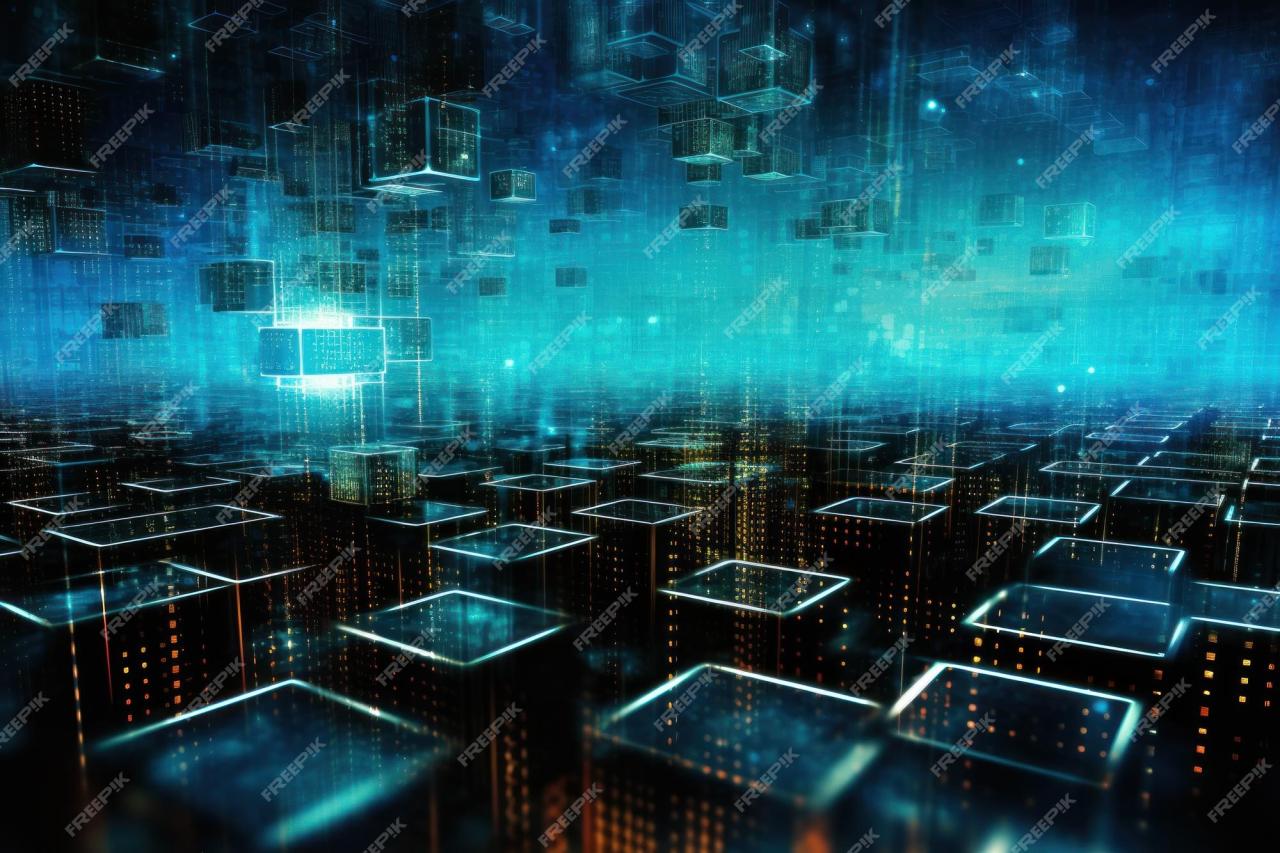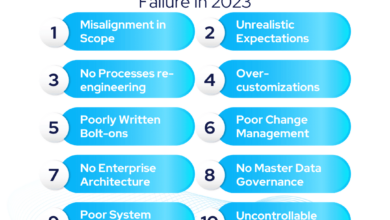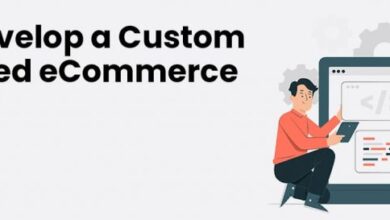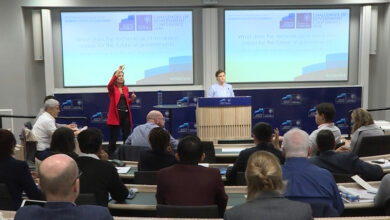
Are Businesses Currently Ready for IoT?
Are businesses currently ready for IoT? The answer, surprisingly, is a nuanced blend of “yes” and “no.” While the potential benefits of the Internet of Things—from increased efficiency and data-driven insights to entirely new business models—are undeniable, the reality is a patchwork of varying adoption rates across industries. Some sectors are diving headfirst into IoT integration, while others remain hesitant, grappling with technological hurdles, security concerns, and the considerable investment required.
This exploration delves into the current state of IoT readiness, examining the factors that contribute to both success and stagnation.
We’ll investigate the current adoption rates across diverse sectors like manufacturing, healthcare, and retail, analyzing the technological maturity of key IoT components and the challenges businesses face in integrating these technologies into their existing operations. We’ll also explore the crucial aspects of workforce training, cost considerations, and data security, ultimately providing a clearer picture of whether businesses are truly prepared to harness the transformative power of the Internet of Things.
Current IoT Adoption Rates Across Industries

The Internet of Things (IoT) is rapidly transforming industries worldwide, but the pace of adoption varies significantly across sectors. Understanding these differences is crucial for businesses strategizing their IoT investments. Factors like regulatory environments, technological maturity, and the inherent nature of the industry itself play a considerable role in determining the speed and extent of IoT implementation.
IoT Adoption Rates by Industry Sector
The following table provides a snapshot of IoT adoption rates across several key industries. Note that precise figures are difficult to obtain due to variations in data collection methodologies and the constantly evolving nature of the technology. These estimates are based on a synthesis of various industry reports and analyses.
| Industry Sector | Adoption Rate (%) | Key IoT Applications | Major Challenges |
|---|---|---|---|
| Manufacturing | 60-70% | Predictive maintenance, supply chain optimization, automation, remote monitoring | Data security, integration complexities, legacy system compatibility, skills gap |
| Healthcare | 50-60% | Remote patient monitoring, connected medical devices, smart hospitals, drug tracking | Data privacy regulations (HIPAA), interoperability issues, high initial investment costs, cybersecurity threats |
| Retail | 40-50% | Smart shelves, inventory management, customer analytics, personalized marketing | Data integration challenges, high implementation costs, need for robust infrastructure, customer data privacy concerns |
| Transportation & Logistics | 45-55% | Fleet management, smart traffic systems, supply chain tracking, autonomous vehicles | Data security, integration with existing systems, regulatory compliance, high upfront costs |
| Energy | 55-65% | Smart grids, energy efficiency monitoring, predictive maintenance of power generation assets, demand-side management | Cybersecurity risks, data management complexities, integration challenges with legacy systems, regulatory compliance |
Factors Driving Varied Adoption Rates
Several factors contribute to the disparity in IoT adoption rates. Manufacturing, with its focus on efficiency and automation, has seen rapid uptake due to readily apparent ROI from applications like predictive maintenance. Conversely, sectors like retail, while showing strong interest, face challenges integrating IoT solutions with existing systems and ensuring customer data privacy. The healthcare industry’s strict regulatory environment and concerns about data security also contribute to a slower, albeit steady, adoption rate.
Investment levels also play a crucial role; industries with higher profit margins and greater access to capital tend to invest more heavily in IoT technologies.
Investment Levels in IoT Across Industries
Investment in IoT varies considerably across industries. Manufacturing and energy sectors, driven by the potential for significant cost savings and efficiency gains, are leading the way in terms of investment. Healthcare, while showing strong interest, often faces budget constraints and needs to carefully weigh the costs against the potential benefits. Retail investment is also significant, but often focused on specific applications like inventory management and customer analytics rather than comprehensive IoT deployments.
The disparity in investment reflects both the perceived return on investment and the specific challenges each sector faces in implementing IoT solutions. For example, the automotive industry is making significant investments in autonomous vehicle technology, driving a substantial portion of IoT investment in the transportation sector.
Technological Readiness for IoT Implementation: Are Businesses Currently Ready For Iot
The Internet of Things (IoT) is rapidly transforming industries, but its successful implementation hinges on technological readiness. This includes not only the availability of essential technologies but also the ability to overcome challenges related to interoperability and security. A thorough understanding of these factors is crucial for businesses considering IoT adoption.The maturity and availability of core IoT technologies are steadily improving.
Sensors, once expensive and limited in functionality, are now diverse, affordable, and readily available in various form factors. Low-power wide-area networks (LPWANs) like LoRaWAN and NB-IoT are expanding coverage, enabling connectivity in remote areas previously inaccessible to traditional cellular networks. Cloud platforms, offering scalable storage and processing power, provide the backbone for data management and analytics. Sophisticated data analytics tools, including machine learning algorithms, are increasingly being integrated into IoT platforms, allowing for the extraction of valuable insights from the vast amounts of data generated by connected devices.
Essential IoT Technologies and Their Maturity
The success of any IoT project relies heavily on the robustness and interoperability of its constituent technologies. Sensors form the foundation, collecting data from the physical world. These range from simple temperature sensors to complex multi-sensor arrays capable of gathering environmental data, location information, and even visual data. Network technologies provide the crucial link, transmitting data from sensors to the cloud or other processing centers.
The choice of network depends heavily on factors such as range, power consumption, and data rate requirements. Cloud platforms provide the storage, processing, and analytics capabilities necessary to make sense of the collected data. Finally, data analytics tools, often leveraging machine learning, enable businesses to derive actionable insights from their IoT data. The increasing sophistication and affordability of these technologies are making IoT implementation more accessible to a wider range of businesses.
Interoperability and Data Security Challenges in IoT Deployments
One of the significant hurdles in widespread IoT adoption is the lack of standardization and interoperability. Different devices and platforms often use incompatible protocols and data formats, making it difficult to integrate them seamlessly. This fragmentation can lead to increased complexity, higher costs, and reduced efficiency. Data security is another major concern. The sheer volume of data generated by IoT devices, coupled with the often-distributed nature of these deployments, creates significant vulnerabilities.
Protecting sensitive data from unauthorized access, misuse, and cyberattacks is paramount. Robust security measures, including encryption, authentication, and access control, are crucial for mitigating these risks. The development of secure, interoperable standards is vital for fostering wider adoption and trust in IoT technologies.
Hypothetical Scenario: Smart Agriculture with IoT
Imagine a large-scale agricultural operation utilizing IoT for precision farming. Numerous sensors are strategically placed throughout the fields, monitoring soil moisture, temperature, and nutrient levels. These sensors transmit data wirelessly via a LoRaWAN network to a central cloud platform. The cloud platform utilizes machine learning algorithms to analyze this data, predicting optimal irrigation schedules and fertilizer application based on real-time conditions.
Automated irrigation systems and fertilizer dispensers, controlled by the platform, adjust their operations accordingly, optimizing resource utilization and maximizing crop yields. Data visualization dashboards provide farmers with real-time insights into their fields’ health, allowing for proactive intervention and preventing potential crop losses. This integrated system leverages various IoT technologies – sensors, LPWAN, cloud computing, and data analytics – to improve efficiency, sustainability, and profitability.
The security of the system is maintained through robust encryption and access control mechanisms, protecting sensitive data from unauthorized access.
Business Processes and IoT Integration
The Internet of Things (IoT) is revolutionizing how businesses operate, offering unprecedented opportunities to optimize processes, boost efficiency, and gain a competitive edge. By connecting devices and systems, businesses can gather real-time data, automate tasks, and make data-driven decisions, leading to significant improvements across various departments. This section will explore key business processes enhanced by IoT integration, showcase successful implementations, and compare traditional and IoT-enabled business models.Integrating IoT into existing business processes requires a strategic approach.
It’s not simply about adding sensors; it’s about understanding how data collected from these sensors can be used to improve decision-making and streamline operations. Successful implementation requires careful planning, integration with existing systems, and a clear understanding of the desired outcomes. This involves identifying bottlenecks, assessing data needs, and choosing the right IoT platform and technologies.
Key Business Processes Improved by IoT Integration
Many business processes benefit from IoT integration. Supply chain management, for instance, can be significantly improved through real-time tracking of goods, predictive maintenance of equipment, and automated inventory management. Similarly, in manufacturing, IoT enables real-time monitoring of production lines, predictive maintenance of machinery, and improved quality control. In the healthcare sector, remote patient monitoring, automated medication dispensing, and improved facility management are just a few examples of IoT’s transformative impact.
Finally, in retail, IoT can enhance customer experience through personalized offers, improved inventory management, and optimized store operations.
Examples of Successful IoT Implementations
Consider a large logistics company that uses IoT sensors to track the location and condition of its shipments in real-time. This allows them to optimize routes, proactively address potential delays, and improve delivery times, resulting in increased customer satisfaction and reduced operational costs. Another example is a manufacturing plant that uses IoT-enabled sensors on its machinery to predict equipment failures before they occur.
So, are businesses truly ready for the IoT explosion? It’s a complex question, hinging on efficient data management and application development. This is where the power of domino app dev, the low-code and pro-code future , comes into play, offering faster, more flexible solutions for integrating IoT data. Ultimately, businesses’ IoT readiness depends on their ability to adapt and innovate with tools like these.
This allows for scheduled maintenance, preventing costly downtime and production disruptions. In the agricultural sector, smart irrigation systems using IoT sensors monitor soil moisture levels and adjust watering accordingly, conserving water and improving crop yields. These are just a few examples of how IoT is driving efficiency and innovation across various industries.
Comparison of Traditional and IoT-Enabled Business Models
| Feature | Traditional Business Model | IoT-Enabled Business Model |
|---|---|---|
| Data Collection | Manual, infrequent, often incomplete | Automated, real-time, comprehensive |
| Decision-Making | Based on historical data, often reactive | Data-driven, proactive, predictive |
| Operational Efficiency | Lower, prone to inefficiencies and delays | Higher, optimized processes, reduced downtime |
| Customer Experience | Can be inconsistent, limited personalization | Enhanced, personalized, proactive service |
| Cost | Higher operational costs, potential for significant losses due to unforeseen issues | Initial investment required, but long-term cost savings through increased efficiency and reduced waste |
Workforce Skills and Training for IoT
The Internet of Things (IoT) is rapidly transforming industries, creating a significant demand for skilled professionals. However, a considerable skills gap exists, hindering widespread and effective IoT adoption. Many companies struggle to find employees with the necessary expertise to design, implement, and manage IoT systems. This gap isn’t just about technical skills; it also includes understanding the business implications and strategic value of IoT integration.
Bridging this gap requires a multi-pronged approach focusing on education, training, and upskilling existing workforces.The successful deployment and management of IoT initiatives depend heavily on a workforce possessing a diverse range of skills. These skills span technical expertise, business acumen, and a strong understanding of data analysis and security. A lack of these skills can lead to failed projects, security vulnerabilities, and ultimately, a poor return on investment.
Essential Skills for IoT Deployment and Management
The following skills are crucial for individuals involved in all aspects of the IoT lifecycle:
- Network Engineering: Understanding network protocols (TCP/IP, MQTT, CoAP), network security (firewalls, intrusion detection), and network management tools is fundamental. This includes experience with various network topologies and the ability to troubleshoot network issues in complex IoT environments.
- Data Analytics and Visualization: IoT devices generate vast amounts of data. Professionals need skills in data mining, data cleaning, statistical analysis, and data visualization to extract meaningful insights from this data. Tools like Python with libraries like Pandas and Matplotlib, or specialized business intelligence software, are essential.
- Cybersecurity: IoT devices are often vulnerable to cyberattacks. Security professionals with expertise in IoT security protocols, threat modeling, vulnerability assessments, and incident response are critical. This includes understanding encryption methods and secure coding practices.
- Cloud Computing: Many IoT solutions rely on cloud platforms for data storage, processing, and management. Skills in cloud computing platforms (AWS, Azure, GCP) and cloud-based data management tools are highly sought after.
- Programming and Embedded Systems: Developing and deploying IoT applications requires programming skills in languages like C, C++, Python, or Java. Understanding embedded systems and hardware interfaces is also essential for many IoT roles.
- Project Management: IoT projects are often complex and involve multiple stakeholders. Strong project management skills are crucial for successful implementation and delivery.
- Business Acumen: Understanding the business context of IoT projects is vital. This includes identifying business needs, defining KPIs, and demonstrating the ROI of IoT initiatives.
Developing an Effective IoT Training Program
A comprehensive training program should address both technical and soft skills, incorporating a blended learning approach. This could involve:
- Online Courses and Certifications: Numerous online platforms offer courses and certifications in various IoT-related technologies and skills. These can provide a foundation of knowledge and recognized credentials.
- Hands-on Workshops and Labs: Practical, hands-on training is essential for developing proficiency in technical skills. Workshops and labs allow participants to work with real IoT devices and software, building their practical experience.
- Mentorship and On-the-Job Training: Pairing less experienced employees with experienced mentors can accelerate their learning and provide valuable practical guidance. On-the-job training allows for learning through real-world application.
- Industry Events and Conferences: Attending industry events and conferences provides opportunities for networking, learning about new technologies, and staying up-to-date with industry best practices.
- Internal Training Programs: Companies can develop their own internal training programs tailored to their specific needs and technologies. This allows for customization and integration with existing workflows.
Cost and Return on Investment (ROI) of IoT

Implementing Internet of Things (IoT) technology offers significant potential for business growth and efficiency, but it’s crucial to understand the associated costs and potential return on investment (ROI) before diving in. A well-planned IoT strategy considers not only the immediate expenses but also the long-term benefits and potential risks. This section delves into the financial aspects of IoT adoption, providing a framework for evaluating its viability for your business.
Cost Components of IoT Implementation
The total cost of ownership (TCO) for IoT projects can be substantial and encompasses several key areas. Underestimating these costs can lead to budget overruns and jeopardize the project’s success. A comprehensive cost analysis is vital for responsible budgeting and effective resource allocation.
- Hardware Costs: This includes the purchase or lease of sensors, actuators, gateways, and other physical devices necessary for data collection and control. The cost varies significantly depending on the complexity and number of devices needed. For example, a simple temperature sensor might cost a few dollars, while a sophisticated industrial sensor could cost hundreds or even thousands.
- Software Costs: Software expenses include the purchase or licensing of IoT platforms, data analytics tools, application development, and security software. The complexity of the software solution and the level of customization required significantly influence the overall cost. Open-source solutions can offer cost savings, but they may require more development and maintenance efforts.
- Integration Costs: Integrating IoT devices and systems with existing IT infrastructure often requires significant investment in consulting, integration services, and potentially modifications to existing systems. This can involve complex data mapping, API development, and ensuring seamless data flow across different platforms.
- Maintenance and Support Costs: Ongoing maintenance, including software updates, hardware repairs, and technical support, are essential for ensuring the long-term reliability and security of the IoT system. These costs can be significant, particularly for large-scale deployments with numerous devices.
Calculating ROI of IoT Investments
Calculating the ROI of an IoT project requires a careful assessment of both costs and benefits. A robust ROI analysis should consider both tangible and intangible benefits. While calculating a precise ROI can be challenging, a structured approach can provide valuable insights.
A common approach involves comparing the total cost of implementation (including hardware, software, integration, and maintenance) with the projected benefits over a specific period. These benefits can include cost savings from improved efficiency, increased revenue from new products or services, and reduced risk from improved safety or predictive maintenance. For instance, a manufacturing company might calculate ROI by comparing the cost of implementing a predictive maintenance system with the savings from reduced downtime and maintenance costs.
The basic ROI formula is: ROI = (Net Profit / Total Investment) x 100%
However, it’s important to account for intangible benefits, such as improved customer satisfaction or enhanced brand reputation, which are harder to quantify but can still significantly impact the overall return.
ROI of IoT Across Different Industries and Use Cases, Are businesses currently ready for iot
The ROI of IoT varies widely depending on the specific industry, use case, and implementation strategy. In some industries, such as manufacturing and logistics, the ROI can be substantial due to significant cost savings and efficiency gains. In other industries, the ROI might be more difficult to quantify, but the intangible benefits can still be significant.
For example, in the manufacturing sector, predictive maintenance using IoT sensors can significantly reduce downtime and maintenance costs, resulting in a high ROI. In the retail sector, IoT-enabled smart shelves can optimize inventory management and improve customer experience, although the ROI might be less immediate and require a longer-term perspective. Similarly, in healthcare, remote patient monitoring can improve patient outcomes and reduce hospital readmissions, offering substantial long-term ROI, even if initial implementation costs are high.
Security Concerns and Mitigation Strategies
The explosive growth of the Internet of Things (IoT) brings with it a significant expansion of potential security vulnerabilities. Connecting everyday devices to the internet, while offering incredible convenience and efficiency, creates new attack vectors for malicious actors. Understanding these threats and implementing robust mitigation strategies is paramount for the successful and secure adoption of IoT technologies.The interconnected nature of IoT devices means a single compromised device can serve as an entry point for a broader network attack.
This necessitates a holistic security approach that considers the entire ecosystem, from individual devices to the network infrastructure and data storage. Failing to address these security concerns can lead to significant financial losses, reputational damage, and even physical harm.
Common IoT Security Threats
IoT deployments face a multitude of security threats. These threats exploit vulnerabilities inherent in the design, implementation, and management of IoT devices and networks. Understanding these threats is the first step towards effective mitigation.
- Data breaches: Unauthorized access to sensitive data stored on or transmitted by IoT devices is a major concern. This data can range from personal information to intellectual property, depending on the application. For example, a compromised smart home security system could expose personal details and even allow physical access to a residence.
- Denial-of-service (DoS) attacks: These attacks overwhelm IoT devices or networks, rendering them unusable. A large-scale DoS attack targeting a critical infrastructure system, such as a smart grid, could have devastating consequences.
- Malware infections: IoT devices, often lacking robust security features, are susceptible to malware infections. This malware can be used to steal data, launch further attacks, or participate in botnets.
- Man-in-the-middle (MitM) attacks: Attackers intercept communication between IoT devices and servers, potentially modifying or stealing data. This is particularly dangerous in applications requiring secure data transmission, such as remote healthcare monitoring.
- Weak or default passwords: Many IoT devices ship with weak or default passwords, making them easy targets for attackers. This highlights the importance of secure password management and regular updates.
Best Practices for Securing IoT Devices and Networks
Implementing a layered security approach is crucial for mitigating IoT security risks. This involves securing individual devices, the network infrastructure, and the data itself.
- Device hardening: This involves disabling unnecessary services, updating firmware regularly, and using strong, unique passwords for each device. Regular security audits are also essential to identify and address vulnerabilities.
- Network segmentation: Separating IoT devices from other network segments limits the impact of a breach. This prevents attackers from easily accessing sensitive data or other parts of the network.
- Data encryption: Encrypting data both in transit and at rest protects sensitive information from unauthorized access. This is particularly important for data transmitted wirelessly.
- Access control: Implementing strong access control measures, such as role-based access control (RBAC), limits who can access IoT devices and data. This minimizes the potential damage from a compromised account.
- Security monitoring and incident response: Regularly monitoring IoT devices and networks for suspicious activity is crucial for early detection of threats. A well-defined incident response plan is essential for quickly containing and mitigating security incidents.
Robust Security Architecture for an IoT System
A robust security architecture for an IoT system should encompass several key components. These components work together to provide a layered defense against various security threats.
- Device Security: This includes secure boot processes, firmware updates, and strong authentication mechanisms at the device level. It also involves using secure elements or hardware-based security modules to protect sensitive cryptographic keys.
- Network Security: This involves using secure communication protocols (e.g., TLS/SSL), firewalls, intrusion detection/prevention systems, and virtual private networks (VPNs) to protect network traffic and devices from unauthorized access.
- Data Security: This includes data encryption, access control, and data loss prevention (DLP) mechanisms to protect sensitive data both in transit and at rest. Regular data backups are also essential for business continuity.
- Security Management: This involves a centralized security management platform for monitoring, managing, and updating security policies across the entire IoT ecosystem. This platform should provide alerts for suspicious activity and facilitate incident response.
Data Management and Analytics in IoT

The Internet of Things (IoT) generates an unprecedented volume of data, posing significant challenges for businesses. Effectively managing and analyzing this data is crucial for unlocking its value and gaining a competitive edge. The sheer scale and velocity of IoT data, coupled with its diverse formats and sources, demand sophisticated strategies for storage, processing, and interpretation. Failure to adequately address these challenges can lead to missed opportunities, inefficient operations, and ultimately, lost revenue.The complexity of IoT data management stems from several factors.
Firstly, the data is often unstructured or semi-structured, coming from diverse sources like sensors, actuators, and embedded systems. Secondly, the volume of data can be overwhelming, requiring robust infrastructure and efficient processing techniques. Thirdly, ensuring data quality and consistency across various sources is critical for accurate analysis. Finally, the real-time nature of much IoT data necessitates rapid processing and analysis to enable timely decision-making.
IoT Data Flow and Analysis
A typical IoT data flow begins with data generation by various devices. This data, ranging from sensor readings (temperature, pressure, location) to operational parameters, is transmitted to a central data hub, often a cloud-based platform. Here, data undergoes cleaning, transformation, and storage. Advanced analytics techniques, such as machine learning and predictive modeling, are then applied to extract meaningful insights.
These insights are finally visualized and presented to stakeholders, informing decision-making and operational improvements. Imagine a visual representation: a network of interconnected sensors (e.g., temperature sensors in a warehouse) sending data to a central server, which then processes the data and generates a heatmap showing temperature variations across the warehouse. This heatmap highlights areas needing attention, allowing for optimized cooling and improved energy efficiency.
Leveraging Data Analytics for Business Insights
Businesses can leverage IoT data analytics in numerous ways. For example, in manufacturing, analyzing sensor data from machines can predict potential equipment failures, enabling proactive maintenance and reducing downtime. In retail, analyzing customer traffic patterns from in-store sensors can optimize store layout and staffing levels. In logistics, tracking shipments through GPS devices allows for real-time monitoring and improved delivery efficiency.
Predictive maintenance, based on machine learning algorithms trained on historical sensor data, can significantly reduce maintenance costs and increase equipment lifespan. For example, a wind turbine manufacturer can use data from sensors monitoring vibration and temperature to predict potential failures and schedule maintenance before catastrophic events occur, saving millions in repair costs and avoiding production losses.
Challenges in IoT Data Management
Several challenges hinder effective IoT data management. Data security is paramount, requiring robust encryption and access control mechanisms to protect sensitive information. Data integration from diverse sources can be complex, requiring standardization and transformation processes. Scalability is another crucial factor, as the volume of data generated by IoT devices can grow exponentially. Finally, the need for real-time processing and analysis necessitates high-performance computing infrastructure and efficient data processing techniques.
The increasing volume and velocity of data necessitate the use of distributed computing frameworks like Apache Spark and Hadoop to efficiently process and analyze large datasets. Moreover, efficient data storage solutions, such as cloud-based data lakes, are needed to handle the scale and variety of IoT data.
Ending Remarks
The journey towards widespread IoT adoption is far from over, but the path is becoming clearer. While significant challenges remain—from security concerns to the skills gap—the potential rewards are too substantial to ignore. Businesses that proactively address these hurdles, investing in the right technologies and training their workforce, are poised to reap significant benefits. The future of business is undeniably intertwined with the Internet of Things, and those who embrace it strategically will be best positioned to thrive in the increasingly connected world.
Question & Answer Hub
What are the biggest barriers to IoT adoption?
High initial investment costs, security concerns, lack of skilled workforce, and integration complexities are major barriers.
How can I calculate the ROI of an IoT investment?
Consider factors like reduced operational costs, increased efficiency, new revenue streams, and improved customer satisfaction. A detailed cost-benefit analysis is essential.
What are some common IoT security threats?
Data breaches, denial-of-service attacks, unauthorized access, and vulnerabilities in devices and networks are common threats.
Is cloud computing essential for IoT implementation?
While not always mandatory, cloud computing offers scalability, cost-effectiveness, and data management advantages for many IoT deployments.





